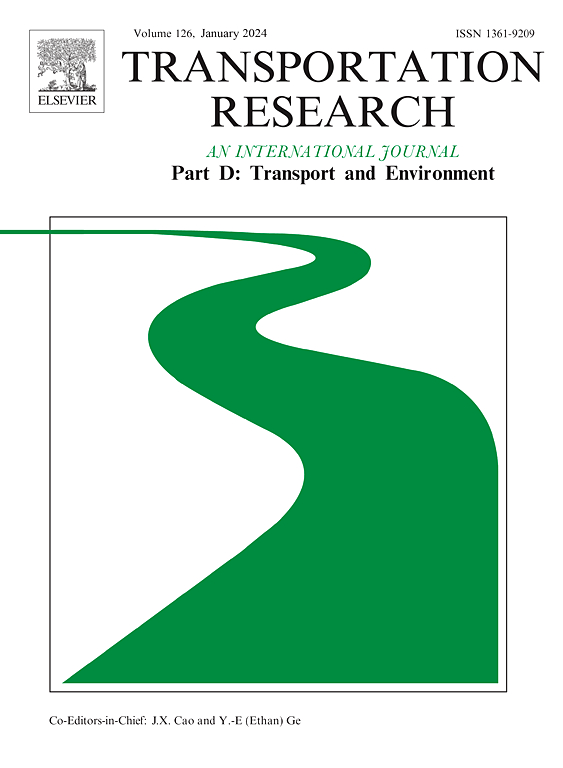Electrification and modal shift in decarbonizing transportation: Impact evaluation in Piedmont region
IF 7.3
1区 工程技术
Q1 ENVIRONMENTAL STUDIES
Transportation Research Part D-transport and Environment
Pub Date : 2025-04-28
DOI:10.1016/j.trd.2025.104757
引用次数: 0
Abstract
The adoption of environmentally friendly transportation is essential for sustainable development. Although numerous policies promote public bus transport, there has been insufficient analysis of their actual impact. This article presents a new framework that integrates demand, supply and electricity consumption using the A-S-I-F-E (Activity, Shift in modal share, change in Intensity, change in Fuel and Electricity generation). The study examines the impact of a transport policy on carbon emissions through a case study on the renovation and electrification of the bus fleet in the Piedmont Region. A pseudo-panel approach, based on household surveys from 2013 to 2022, is employed. Results indicate a significant increase in public bus transport following the application of the Synthetic Difference-in-Difference (SDiD) method. In terms of emissions, reductions in CO, NOX, CO2, PM2.5 and CH4 were observed, while emissions of NMVOCs and N2O increased. Consequently, combining demand- and supply-side should be promoted to reduce emissions effectively.
脱碳交通的电气化和模式转变:对皮埃蒙特地区的影响评价
采用环境友好型交通工具对可持续发展至关重要。虽然有许多政策促进公共汽车运输,但对其实际影响的分析不足。本文提出了一个使用a - s - i - f - e(活动,模态份额的变化,强度的变化,燃料和发电的变化)整合需求,供应和电力消耗的新框架。该研究通过对皮埃蒙特地区公共汽车车队的改造和电气化的案例研究,审查了运输政策对碳排放的影响。采用了一种基于2013年至2022年住户调查的伪面板方法。结果表明,应用综合差中差(SDiD)方法后,公共汽车运输量显著增加。排放方面,CO、NOX、CO2、PM2.5和CH4均有所减少,NMVOCs和N2O的排放量有所增加。因此,应促进供需结合,有效减少排放。
本文章由计算机程序翻译,如有差异,请以英文原文为准。
求助全文
约1分钟内获得全文
求助全文
来源期刊
CiteScore
14.40
自引率
9.20%
发文量
314
审稿时长
39 days
期刊介绍:
Transportation Research Part D: Transport and Environment focuses on original research exploring the environmental impacts of transportation, policy responses to these impacts, and their implications for transportation system design, planning, and management. The journal comprehensively covers the interaction between transportation and the environment, ranging from local effects on specific geographical areas to global implications such as natural resource depletion and atmospheric pollution.
We welcome research papers across all transportation modes, including maritime, air, and land transportation, assessing their environmental impacts broadly. Papers addressing both mobile aspects and transportation infrastructure are considered. The journal prioritizes empirical findings and policy responses of regulatory, planning, technical, or fiscal nature. Articles are policy-driven, accessible, and applicable to readers from diverse disciplines, emphasizing relevance and practicality. We encourage interdisciplinary submissions and welcome contributions from economically developing and advanced countries alike, reflecting our international orientation.

 求助内容:
求助内容: 应助结果提醒方式:
应助结果提醒方式:


